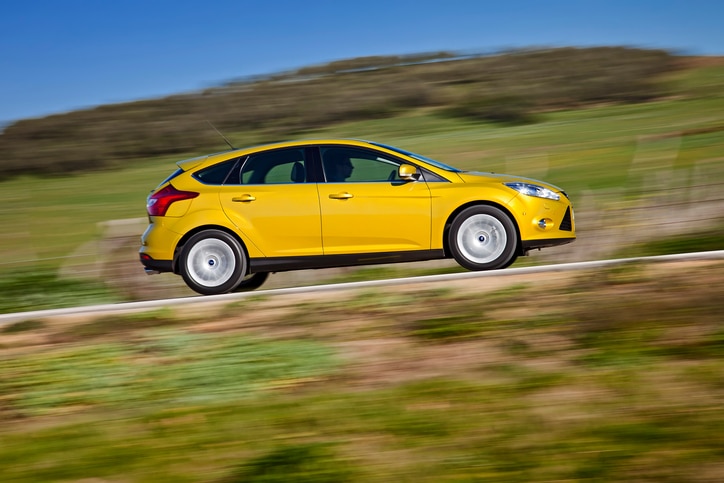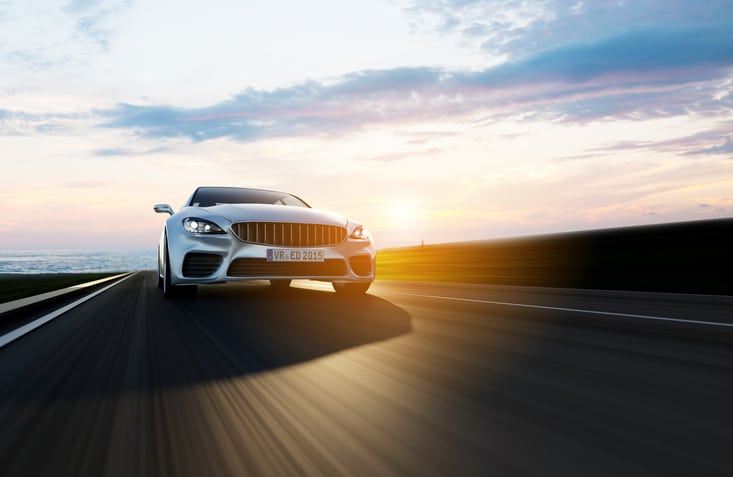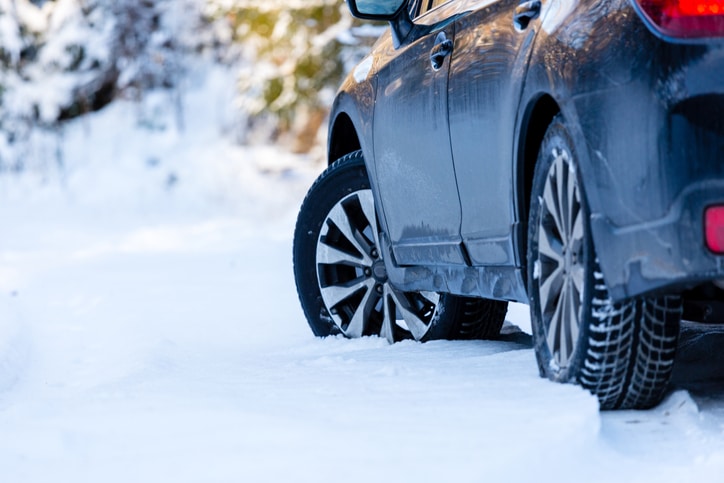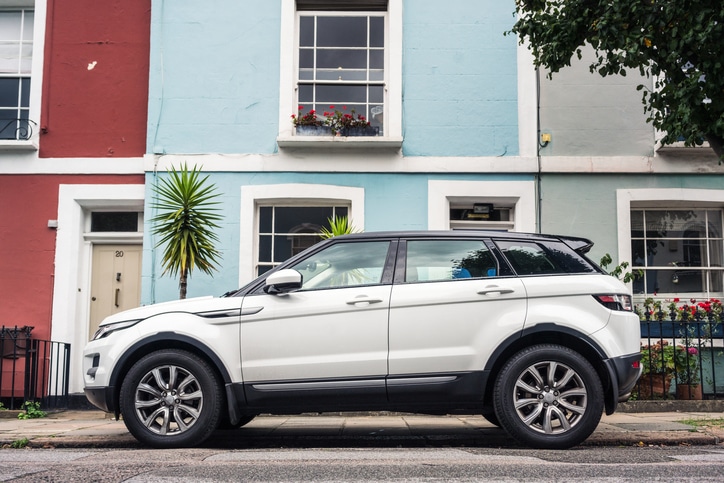What’s best: front-wheel drive, rear-wheel drive or four-wheel drive? Some drivers have a preference, others don’t give it much thought. But if you want a car that offers the very best performance for your usual type of driving, it’s worth considering.
Here, we look at the pros and cons of each, so you can get an idea of which is right for you. Use the links below to jump to the section you need or read on for the complete guide.
Front-Wheel Drive
Rear-Wheel Drive
Four-Wheel Drive
Front-Wheel Drive
With power going only to the front two wheels, front-wheel drivetrains are the cheapest and least complex of the three, and offer a range of performance benefits for day-to-day driving.
Pros
- Affordable – Fewer parts mean a more affordable car overall, so you might be able to get more for your money. Their simplicity also means they’re cheaper to repair and maintain.
- Good fuel economy – Cars with front-wheel drive are usually light, making for excellent fuel economy.
- Dependable efficiency – The fact the engine is directly connected to the drivetrain means reliable everyday efficiency, reducing inertia. This also helps with fuel economy.
- Predictable handling – Front-weighted cars are considered easier for everyday driving, as they don’t allow for oversteer that can be dangerous for inexperienced motorists.
- Plenty of steering feedback – The driver gets a better feel for corners, with tactile handling that tells you when the wheels are slipping.
- Excellent traction in slippery conditions –Front-wheel drive offers good traction when roads are wet.
Cons
- Understeer –Everything is weighted to the front which can impact handling and result in understeer.
- Limited turning circle – Front-wheel drivetrains can interfere with the turning circle of the front wheels, which isn’t great for city driving when there are lots of tight turns.
- Danger of loss of traction – When cars lose traction the front wheels tend to go first. That means it can be more difficult to adjust your way out of a skid when the wheels start to slide.
- Towing problems – Front-wheel drive cars aren’t great for towing. That’s because the weight is transferred to the rear wheels, making for inefficient power output at the front.
- Torque steer – High-torque cars like hot hatchbacks can suffer from torque steer with a front-wheel drivetrain. That’s when the traction can’t keep up with the speed, causing the wheels to spin and the steering wheel to move in your hands.
Best For
The affordability and simplicity of front-wheel drive cars make them a great choice for cheap city run-arounds, and they’re good on fuel, too. They also make for a fun and easy drive, with their responsive handling and instant acceleration.
Rear-Wheel Drive
With all the power coming from the back, rear-wheel drive cars offer a great weight ratio and excellent off-the-line acceleration. They’re not for everyone, though, and we’ll get into why below.
Pros
- Great acceleration – As the power comes through the back, all of it is used to push the car forward, with nothing dragging behind as with a front wheel drive car. The extra weight at the back also helps with rear downforce for a faster start.
- Performance handling – Rear-wheel drive cars are renowned for their excellent handling, with the weight more evenly distributed. The front wheels only have one task to perform, which usually means sharper steering and an excellent turning circle.
- No torque steer – Rear output means zero torque steer at the front, so you can accelerate hard with no loss of control.
- Great for towing – Power at the back + weight at the back = an excellent tow car. Provided you’ve got plenty of torque, you should be able to pull almost anything in a rear-wheel drive car.
Cons
- Poor traction when it’s slippery – The problem with rear-wheel drive is that there’s often no weight to push the tyres down into the road, especially if you’re boot’s empty. This means that when roads are slippery, things are likely to get skiddy. Rear-wheel drive cars are also less capable in the snow or in mud, as they just can’t hold traction like front-wheelers and 4X4s.
- The dangers of fishtailing – Fishtailing is when the rear wheels push the car into an uncontrollable spin – it often happens when roads are wet or icy. It can be difficult to regain control, so it’s something to be aware of.
- Hard to drive – Different handling characteristics can make rear-wheel drive cars difficult to master, especially for inexperienced drivers. Front wheel drive cars are much better all-rounders.
- Impact on interior space – Because the drivetrain sits beneath the car, a rear-wheel drive system can impact on interior space within the cabin, reducing the space for rear passengers.
- More expensive – Rear-wheel drive cars are more expensive, which can be a sticking point for many drivers.
Best For
Motorists looking for performance and acceleration. Rear wheel drives are fast, excellent at handling in the dry and offer good comfort on the motorway. They can be expensive to buy and maintain, though, and their unique handling won’t suit every driver.
Four-Wheel Drive
Power going to all wheels can only be a good thing, right? Some drivers would agree, others wouldn’t. Here are the pros and cons, so you can judge for yourself.
Pros
- Excellent traction – 4x4s offer outstanding road holding and traction, with all four wheels gripping the road to help the driver retain control. This makes four-wheel drive an excellent choice for SUVs that need to perform in extreme conditions.
- Powerful and responsive acceleration – With all four wheels powering the car off the line, 4x4s provide responsive acceleration with no mechanical inertia.
- Great handling – The weight of the drivetrain provides extra grip when cornering, as well as excellent weight distribution. Usually, four-wheel drive cars have the perfect balance of understeer and oversteer, keeping the car solidly on the road without letting the tail swing out.
- Stopping distance – Both standard braking and engine braking can be used to bring 4x4s to a stop, so they have short stopping distances.
Cons
- Expensive to buy – A complex drivetrain means four-wheel drive cars are more expensive to buy, repair and maintain.
- Poor fuel economy – 4x4s are always going to suffer from poor fuel economy because they’re much heavier than their front and rear wheel counterparts. More fuel is also needed to power four individual wheels, hence the lower economy figures.
Best For
Four-wheel drive works best on SUVs built for driving in tough conditions, providing excellent traction and handling both on and off the road. But the initial price and running costs might put some drivers off, especially if you do most of your driving in town.
Whatever car you drive, you can rely on Prestone. Our high-performance car maintenance products are tested in all extremes, so you know they work for you every day. To find out more, visit our homepage today.






